David Turnbull Publications
by: VEIL - Victorian Eco Innovation Lab, 2012-03-27 03:25:00 UTC
VEIL Senior Research Fellow
Dr. David Turnbull
Publications:
Turnbull, D (2011) On the Trails of Markers and Proxies: The Socio-cognitive Technologies of Human Movement, Knowledge Assemblage, and Their Relevance to the Etiology of Nasopharyngeal Carcinoma Chinese Journal of Cancer, 30(2): 85-95.
Turnbull, D (2010) Trails and Tales: Multiple Stories of Human Movement and Modernity, Arctic Geopolitics and Autonomy, Arctic Perspective Cahier Series No. 2, M. T. Bravo and N. Triscott Eds). Ostfildern, Hatje Cantz.
Turnbull, D (2009) Introduction: Futures for Indigenous Knowledges, Futures: Special Issue on The Futures of Indigenous Knowledges, Guest Editor David Turnbull, 41(1): 1-5.
Turnbull, D (2009) Boundary-Crossings, Cultural Encounters and Knowledge Spaces in Early Australia, The Brokered World: Go-Betweens and Global Intelligence 1770-1820, S. Schaffer, L. Roberts, K. Raj and J. Delbourgo Eds). Sagamore Beach, Science History Publications: 387-428.
Turnbull, D (2007 ) Maps, Narratives and Trails: Performativity, Hodology, Distributed Knowledge in Complex Adaptive Systems– An Approach to Emergent Mapping, Geographical Research, 45(2): 140-9.
Turnbull, D (2006) Movement, Boundaries, Rationality and the State: The Ngaanyatyarra Land Claim, the Tordesillas Line and the West Australian Border, Moving Anthropology: Critical Indigenous Studies, T. Lea, E. Kowal and G. Cowlishaw Eds). Darwin, Charles Darwin University Press: 185-200.
Turnbull, D (2005) Multiplicity, Criticism and Knowing What to Do Next: Way-finding in a Transmodern World'. Response to Meera Nanda's Prophets Facing Backwards, Social Epistemology, 19(1): 19-32.
Turnbull, D (2005) Locating, Negotiating, and Crossing Boundaries: A Western Desert Land Claim, The Tordesillas Line and The West Australian Border, Environment and Planning D: Society and Space, 23(Boundary Variations. eds Annemarie Mol and John Law): 757-70.
Turnbull, D (2004) Narrative Traditions of Space, Time and Trust in Court: Terra Nullius, 'wandering', The Yorta Yorta Native Title Claim, and The Hindmarsh Island Bridge Controversy, Expertise in Regulation and Law, G. Edmond (Ed. Aldershot, Ashgate: 166-83.
Turnbull, D (2002) Performance and Narrative, Bodies and Movement in the Construction of Places and Objects, Spaces and Knowledges: The Case of The Maltese Megaliths, Theory, Culture and Society, 19(5&6): 125-43.
Turnbull, D (2003 2nd ed (1st ed 2000)) Masons, Tricksters and Cartographers: Comparative Studies in the Sociology of Scientific and Indigenous Knowledge, London, Routledge. Also available at http://www.amazon.com/Masons-Tricksters-Cartographers-Comparative-Scientific/dp/9058230015
Turnbull, D (1997) Reframing Science and Other Local Knowledge Traditions, Futures, 29(6): 551-62.
Turnbull, D (1996) Cartography and Science in Early Modern Europe: Mapping the Construction of Knowledge Spaces, Imago Mundi, 48: 5-24.
The Sounds of Electric Vehicles
by: Eco Geek Latest, 2012-03-30 22:05:29 UTC

For some, electric vehicles are too quiet, and consideration is already being given to requiring EVs to be more audible. Eventually, the outcome from the Pedestrian Safety Enhancement Act of 2010 is likely to require that electric vehicles make some sound, at least at low speeds, to help provide an auditory signal to pedestrians, cyclists, and others in order to improve safety. Even sighted people rely on audible cues to know that a vehicle is nearby.
In my recent test drive of the forthcoming Volkswagen E-Golf, I immediately noticed that this car makes noise. The purr made by the E-Golf is a variable tone (that sounds like a "young Wookiee" according to Autoblog Green). It is characteristic and distinctive, and seems to relate to engines and motors while not being a usual engine sound.
I had this car roll up behind me as another test driver came back from their loop in the car, and I would likely not have been aware of the car's presence without the sound. In general, I think it is effective, and not annoying or intrusive. It communicates its presence and it changes with the speed of the vehicle, which is something that happens naturally with a conventional engine, as well.
But, when driving this car, I found my perception of the sound was as something external, rather than part of the car I was driving. At one point, as I was about to pull out onto the road, I heard the sound increase, and I momentarily hesitated, because the sound seemed to be from outside, as though another vehicle was coming, rather than the sound seeming to be related to teh car I was driving. Almost immediately, I realized what it was, and that the road was clear, and I continued on. But the sound was behaving differently enough that it gave me that brief pause.
This was only an intial impression, and I only spent 10 minutes or so in the car. Very likely, a regular driver of one of these cars will become accustomed to the sound and how it relates to the car. I don't think I would have any problem acclimating to it if I was driving this car regularly. But to me, it is indicative that the development of sound for EVs may have subtleties that will need to be worked out in order to find the right way to provide sound cues from electric cars.
[Ed. Note: Volkswagen paid for the travel and lodging for my trip to SF where I gathered some of the information for this story.]
image credit: Volkswagen
 MA Prize 2012: Green Dwelling
MA Prize 2012: Green Dwelling
by: Sustainable Design News, 2012-03-31 02:48:56 UTC
 Modern Atlanta (MA) launched its second annual MA Prize. The award aims to embrace the richness of commercial, cultural, social, environment and multi-disciplinary design.
Modern Atlanta (MA) launched its second annual MA Prize. The award aims to embrace the richness of commercial, cultural, social, environment and multi-disciplinary design.
This year the prize calls for designers to submit projects that critically consider today's notions of sustainability as applied to the modern dwelling.
 Post-"Entourage," Adrian Grenier Brews Beer, Socially Conscious Businesses
Post-"Entourage," Adrian Grenier Brews Beer, Socially Conscious Businesses
by: fast company, 2012-03-30 21:59:49 UTC
Adrian Grenier doesn't mind if you call him Vince. But he'd also like you to call him a community builder who has some big ideas about turning media culture into a positive way to engage teens. Oh, and he thinks you should try a little of his retro-inspired beer. Let's get a little better acquainted.
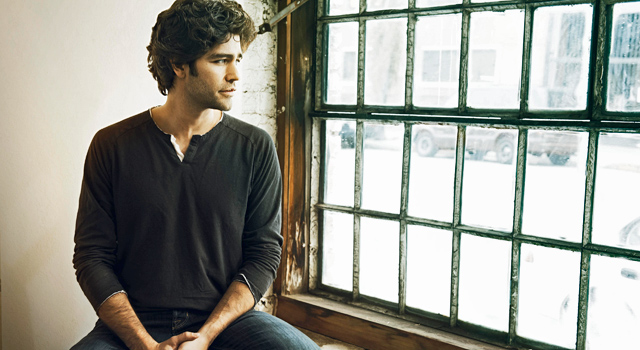
You likely know Adrian Grenier as Vincent Chase, the amiable leader of the Entourage brat pack, with a piercing pair of baby blues and a 5 o’clock shadow. And he doesn’t mind that at all (more on that in a minute). What you may not know is that from the tender age of 9, Grenier’s been an entrepreneur who now has his hand in four different ventures.
Those include Reckless Productions, a company that spawned the recent documentary Teenage Paparazzo; SHFT, the multimedia platform that aggregates content on socially conscious business and culture; his own iPad app; and craft beer. Is your head spinning yet?
Grenier’s isn’t. Chatting with Fast Company, the actor sounds just as grounded and laid-back as his Entourage alter-ego--albeit with serious philosophical views on business and media culture. Though his celebrity status has only gained steam in an age of pins, tweets, and Facebook likes, Grenier tells me, “We all have the power through technology to communicate the things that are important to us. That is a power to use responsibly.”
It’s a message he’s eager to spread--particularly to teens. Using Indiegogo’s crowdfunding platform, Grenier is raising money to take his show--the documentary Teenage Paparazzo--on the road. Dubbed the Empowerment Tour, Grenier aims to bring the film, a companion art exhibit (think pieces by Banksy and Shepard Fairey) and a related curriculum to 80 high schools around the country at no cost to the schools. The intent is to educate and engage kids, “so they are not just passively affected by the media, but actually take an active role in how they create their own images.”
Grenier’s also getting ready to launch Churchkey Can Co. in the next couple of weeks with Justin Hawkins, a former Nike designer.
So what does retro beer (you open the can with an old-timey piercing tool--no pop tops here) have to do with educating celebrity-obsessed teens or curating news and views with a social conscience? More than meets the eye, according to this young entrepreneur.
FAST COMPANY: Tell us when you first got interested in starting your own business. Were you one of those kids who sold lemonade or Halloween candy to make a profit?
ADRIAN GRENIER: Big time. I remember I was about 9, growing up on the Upper West Side in Manhattan. I had the revelation I could buy a little packet of Kool-Aid for 25 cents and a pack of Dixie cups and a big thing of sugar and put it together. I could sell each of those cups, there were about 100 to a pack, at 25 cents a piece. It was quite a profit [laughs] but it wasn’t enough for me to just sell Kool-Aid. I built a cart out of wood that fit into my mother’s shopping cart that had two pockets so I could have a pitcher of Kool-Aid on one side. My ultimate vision was to have ice cream, but refrigeration was a problem.
The idea for ChurchKey Can Co. was born from a chat with a friend at a birthday party about a year ago while you were working a lot of other projects. Would you define yourself as impulsive or a risk taker?
I consider myself an artist, first and foremost. I have a big imagination, so when I envision something, my instinct is to create it. My mom always told me I could do anything I want. I saw how hard she worked, and the apple doesn’t fall far from the tree. I had that confidence and her work ethic. Now with the DIY culture and the opportunities available with technology and through Entourage, I embarked on a journey to make things happen, to communicate that vision. Of course, not one person alone can make anything happen; you need help. So it’s partly having the vision and then enlisting support.
Many actors are entrepreneurs by necessity--you become your own business. Rather than just stick with your production company, why do you feel compelled to branch out in so many directions?
I believe they are not unrelated. They are pieces to a larger vision. A production company tells stories and I seek out storytelling first. I don’t know how much real value I bring to the world, I am just trying to share ideas and things that inspire me. The people in the trenches that are really doing the work, like teachers and community leaders, those are people creating value. We are simply telling their stories. And building communities.
Teenage Paparazzo highlights the importance of unplugging, yet you created the app “Reckless Adrian Grenier” to help fans engage. How important is a virtual community, especially in an age of individualism?
I think it's probably the most important and the most relevant. I think we are in an ironic place, a post-modern era where technology, on one hand, is isolating us, but it is also the thing that is going to bring us all together. We are no longer beholden to the monopolies of yesteryear. We define the culture as we see fit and we can start business without the restriction or oppression of big capitalist monopolies. It’s very democratic. It comes down to community and really connecting with people that share your values and letting that propagate. Our generation will replace the generation of greed and wanton indulgence with a new social, entrepreneurial capitalism. Sustainable business with a strong social consciousness--that is the Kool-Aid that I drink.
So how hard is it to get people to see past you as Vince, the Hollywood consumer?
I like Vince [laughs], and I am proud to have been part of Entourage. It is such a relevant and defining show of an era, a zeitgiest of the time. I don’t mind if people ask me where Turtle is. I wonder where Turtle is, too. I want people to know the different sides of me, but Vince is a community building kind of guy, so it is not all that incongruent.
Here's Grenier's take on the business of generosity:
[twistage 1a3d32983dbfe]
This interview has been condensed and edited for clarity and length. For more from the Who's Next interview series, click here; for more advice from great leaders follow Co.Lead on Twitter.


 Double Flush for Green Power
Double Flush for Green Power
by: Yanko Design, 2012-03-30 14:25:02 UTC
Eco Toilet gives you the option of using recycled washbasin water and regular fresh water for flushing. The water tank is divided into two segments and the recycle section further has an LED indicator on it. When it’s full and ready for use, the light glows green, otherwise just do your business with the regular flush. Simple as that!
Designer: Jang Woo-seok
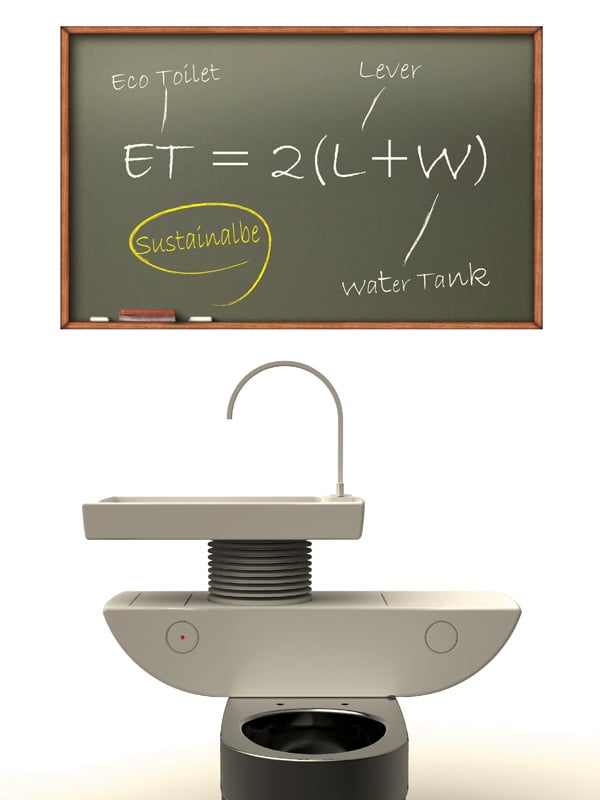
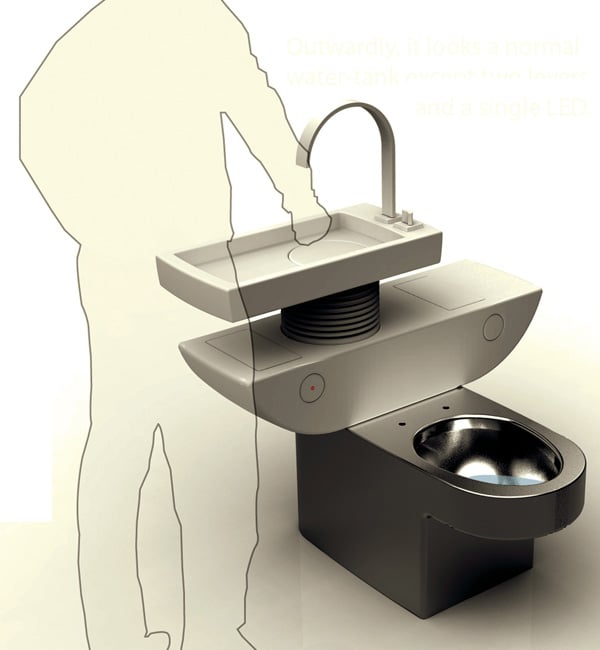
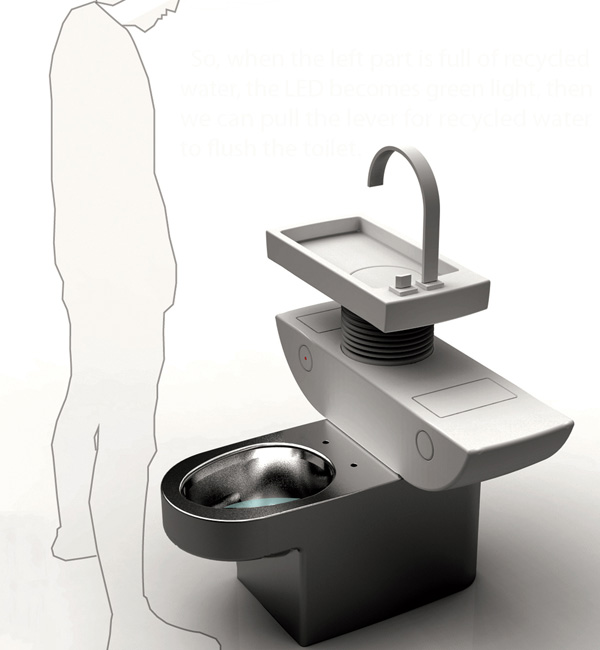
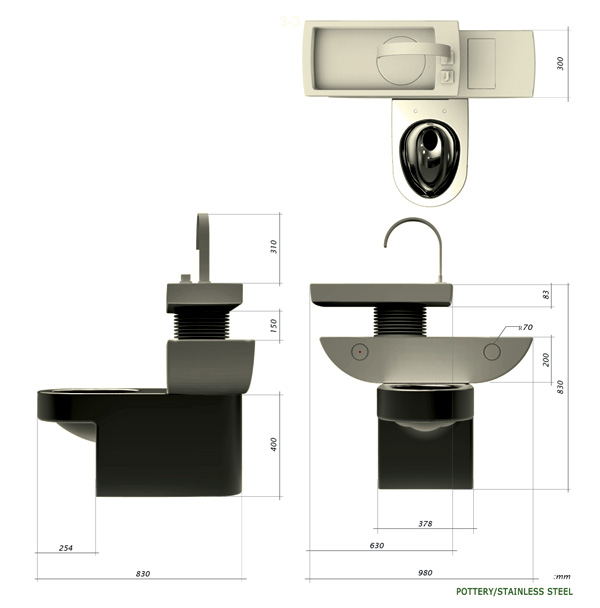
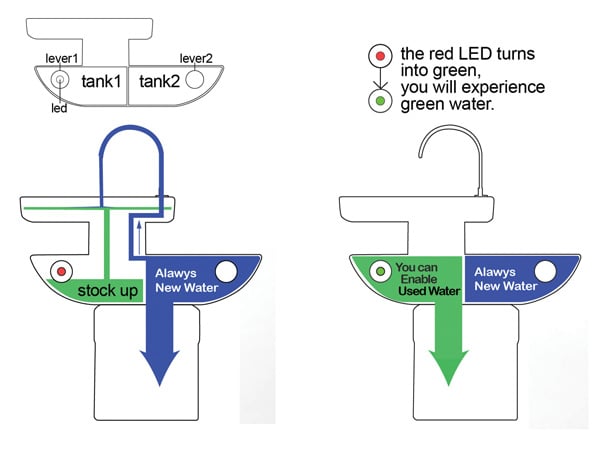
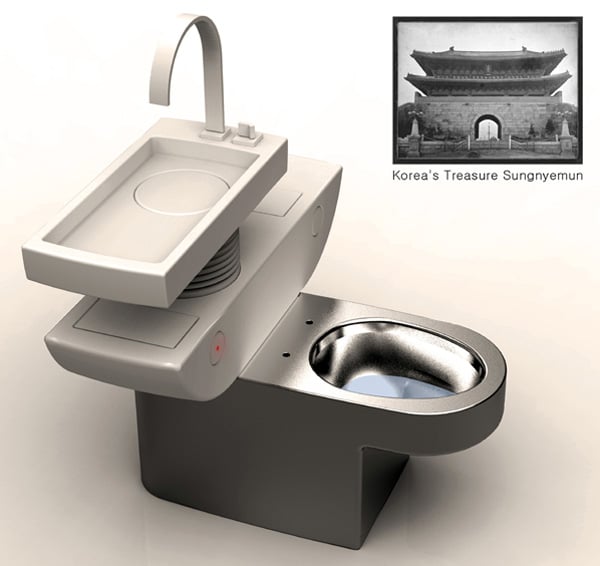



-
Yanko Design
Timeless Designs - Explore wonderful concepts from around the world!
Yanko Design Store - We are about more than just concepts. See what's hot at the YD Store!
(Double Flush for Green Power was originally posted on Yanko Design)
Related posts:
- Swing Along Green Power
- Green Power For Bedside Stuff
- Customize Your Flush!
Guardian Sustainable Business Awards 2012 Shortlist
by: Sustainable Design News, 2012-03-29 01:45:18 UTC
 The Guardian unveiled the shortlist for the 2012 Guardian Sustainable Business Awards. The shortlist showcase innovative corporate initiatives that tackle the most pressing environmental and social challenges businesses face.
The Guardian unveiled the shortlist for the 2012 Guardian Sustainable Business Awards. The shortlist showcase innovative corporate initiatives that tackle the most pressing environmental and social challenges businesses face.
The judging panel was made up of some of the most influential thinkers from the world of sustainable business, from Jonathan Porrit and John Elkington, to Polly Courtice and John Sauven. Judges were asked to reward innovative corporate sustainability projects that are fully embedded and replicable.
 What's Next: Eco friendly fibers for the eco conscious fashion world
What's Next: Eco friendly fibers for the eco conscious fashion world
by: Ecofriend, 2012-03-31 11:38:39 UTC
Sonia Renthlei:
As we know it
Fashion has remained an intricate part of human existence. Aside from the fact that they make us look good, they serve as a symbol of status and wealth for many. All of us (whether fashion conscious or not) drive the industry. As such, our demands influence what materials designers use to create their products. While we’ve come a long way from using only animal skins to cover our bodies, it’s a fact that modern designing methods use plenty of non-biodegradable materials. This has led to manufacturing processes that are harmful to the environment.

Morphotex
Now, however, the threat of environmental degradation seems to have woken us up. As such, we’re seeing a change in trends with many designers deciding to switch over to eco friendly fibers for their creations. These fibers can be used as a whole or part of clothing. They’re easy on the skin, can be stitched to any style and offer local producers and artisans employment avenues.
Need for change
Skeptics could argue that using synthetic fibers helps natural elements to thrive. But this isn’t the case as these natural sources need a healthy environment in order to grow. So, if we continue to use harmful non-biodegradable materials for fashion, we’re only compounding the problem which in fact needs an immediate solution. Some of the better known eco friendly fibers that are beginning to be incorporated on a larger scale are organic cotton, peace silk, bamboo, corn, hemp, coconut shells and even milk.
a) Getting fabric to look the way it does involves certain processes. For bamboo, mechanical and chemical processes are used. The first involves crushing the plant into mush so that the fiber can be combed mechanically and spun to produce yarn. While the process is eco friendly, it needs a lot of labor power and is expensive. The chemical process, meanwhile, involves ‘cooking’ the plant to turn it into mush and bleaching it. It’s employed by most manufacturers of bamboo fabric.
b) Organic cotton is beginning to be widely used by eco conscious individuals. It involves growing cotton that hasn’t been genetically engineered without the use of pesticides. It’s safe on the environment as it doesn’t leach harmful chemicals into the soil and is healthier for the skin too.
c) Silk has for long been used to create exotic clothing. It’s a natural fiber produced by silk worms and doesn’t cause allergic reactions to people with sensitive skin. However, there’s a more eco friendly form of silk known as peace silk. Here, the worms are allowed to emerge from cocoons till they die a natural death. This form, the result of which is said to be softer and fluffier cloth, is being advocated by activists and appears to be catching on.
What’s next?
a) Morphotex
Summer is around the corner and what better way to welcome the solstice than by getting yourself one these Morphotex-based creations designed by Donna Sgro? Morphotex is a fiber that’s been developed using nanotechnology. It mimics the Morpho butterfly’s microscopic structural wings and reflects a multifaceted color. The technology involves using 61 fibers of polyester and nylon in alternating layers. No dyes or pigments have been used so Morphotex produces only a little industrial waste and uses less energy to create.
b) Ingeo: A corn-based fiber that’s simply a-maize-ing

Ingeo
NatureWorks LLC’s Ingeo is made from fermented cornstarch instead of petroleum. Used to create fashionable clothing, Ingeo is also incorporated in the manufacture of bio plastic for packaging, films, casings, electronics and home textiles. The material uses the carbon and sugar stored in plants to make biopolymers. The resulting resin is injection molded into materials used to make textiles and plastics.
c) Milk cloth
Milk cloth, while not new, isn’t a material used by many to create fabric. But Dolores Piscotta has been marketing milk cloth-based products for two years now. She sells everything from pants and shirts to dresses and eye masks. The fabric itself is produced using dried liquid milk after having its proteins extracted. The proteins are dissolved into a chemical solution and put into a machine that weaves the fibers together. The resulting material is soft, breathable and holds dye.
d) Banana fabric

Banana Fabric
The banana tree can be used for so much more than it fruit. Its leaves and cast-off stems can be used for creating eco friendly fabrics in the making of table cloths, clothes, curtains and just about anything that uses cloth. The inner layer of the tree can be used to create fine fabrics for ethnic wear like Indian saris and Japanese kimonos.
e) Clothing fibers made from milk and seaweed

CLOTHING FIBERS MADE FROM MILK AND SEAWEED
Two Square Meter is a German-based company that produces clothes from milk and seaweed. The fabrics contain either of the two sources whose properties are said to be nourishing for the skin. How far that’s true we aren’t sure, but creating fabric out of two natural elements is far laudable than non-biodegradable materials.


 TED: Taylor Wilson: Yup, I built a nuclear fusion reactor - Taylor Wilson (2012)
TED: Taylor Wilson: Yup, I built a nuclear fusion reactor - Taylor Wilson (2012)
by: TEDTalks (video), 2012-03-22 15:08:19 UTC
Taylor Wilson believes nuclear fusion is a solution to our future energy needs, and that kids can change the world. And he knows something about both of those: When he was 14, he built a working fusion reactor in his parents' garage. Now 17, he takes the TED stage at short notice to tell (the short version of) his story.
 TED: Donald Sadoway: The missing link to renewable energy - Donald Sadoway (2012)
TED: Donald Sadoway: The missing link to renewable energy - Donald Sadoway (2012)
by: TEDTalks (video), 2012-03-26 15:19:45 UTC
What's the key to using alternative energy, like solar and wind? Storage -- so we can have power on tap even when the sun's not out and the wind's not blowing. In this accessible, inspiring talk, Donald Sadoway takes to the blackboard to show us the future of large-scale batteries that store renewable energy. As he says: "We need to think about the problem differently. We need to think big. We need to think cheap."
 Deloitte Outlines Process for Choosing Environmental Metrics
Deloitte Outlines Process for Choosing Environmental Metrics
by: Environmental Leader, 2012-03-30 06:35:51 UTC

Public and private companies are finding it a major challenge to determine what environmental, social and governance (ESG) information to disclose, according to a new report from Deloitte. According to the report, Disclosure of Long-Term Business Value: What Matters?, leading companies already are working to bring reporting on non-financial ESG performance to the same level [...]
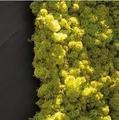

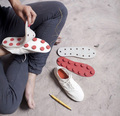
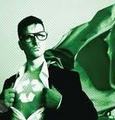



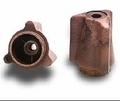


Comments by our Users
Be the first to write a comment for this item.